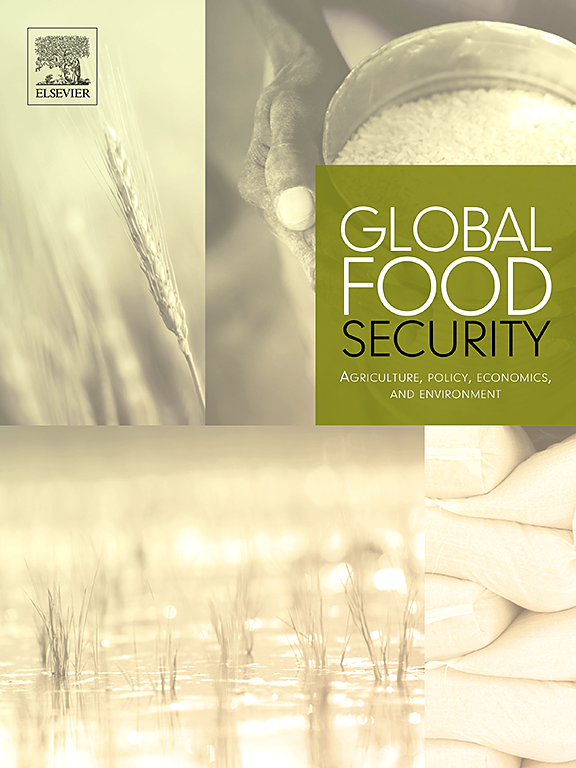Increasing inequality in agri-food value chains: global trends from 1995-2020
IF 9.6
1区 经济学
Q1 FOOD SCIENCE & TECHNOLOGY
Global Food Security-Agriculture Policy Economics and Environment
Pub Date : 2025-09-01
DOI:10.1016/j.gfs.2025.100883
引用次数: 0
Abstract
Agri-food systems are increasingly globalised. In the last three decades, as national food systems have become more interdependent, the distribution of productive activities and economic value between different actors and countries has changed. Prior research on domestic agri-food value chains has shown that the farm share of food-system income has declined consistently, while post-farmgate sectors capture the majority of income. Market concentration in post-farmgate sectors is high in industrialised economies and is driving food-system transformations in developing economies. Here, we extend this analysis to assess the global distributional consequences of food-system transformations for the first time. We use multi-regional input-output data to disaggregate food expenditures between different countries and sectors across agri-food value chains, from 1995 to 2020. We arrive at several main findings: 1) agricultural production for food and industrial inputs has increasingly shifted to the global South, 2) global food-system income is increasingly captured by post-farm activities in the global North, and 3) a substantial share of food-system income is captured in low-tax jurisdictions with low agricultural production. These findings demonstrate that the contemporary agri-food system and agricultural trade are skewing the distribution of economic returns away from agricultural producers in the global South.
农业食品价值链不平等加剧:1995-2020年全球趋势
农业食品系统日益全球化。在过去三十年中,随着各国粮食系统变得更加相互依存,生产活动和经济价值在不同行为者和国家之间的分配发生了变化。先前对国内农业食品价值链的研究表明,农业在粮食系统收入中所占的份额持续下降,而后农场部门占据了大部分收入。工业化经济体后农场部门的市场集中度很高,正在推动发展中经济体的粮食系统转型。在这里,我们首次将这一分析扩展到评估粮食系统转型的全球分布后果。我们使用多区域投入产出数据,对1995年至2020年农业食品价值链上不同国家和部门之间的粮食支出进行了分类。我们得出了几个主要发现:1)粮食和工业投入的农业生产越来越多地转移到全球南方;2)全球粮食系统收入越来越多地被全球北方的农场后活动捕获;3)粮食系统收入的很大一部分被农业产量低的低税收管辖区捕获。这些发现表明,当代农业食品体系和农业贸易正在扭曲经济回报的分配,使其远离全球南方的农业生产者。
本文章由计算机程序翻译,如有差异,请以英文原文为准。
求助全文
约1分钟内获得全文
求助全文
来源期刊

Global Food Security-Agriculture Policy Economics and Environment
FOOD SCIENCE & TECHNOLOGY-
CiteScore
20.90
自引率
3.40%
发文量
69
期刊介绍:
Global Food Security plays a vital role in addressing food security challenges from local to global levels. To secure food systems, it emphasizes multifaceted actions considering technological, biophysical, institutional, economic, social, and political factors. The goal is to foster food systems that meet nutritional needs, preserve the environment, support livelihoods, tackle climate change, and diminish inequalities. This journal serves as a platform for researchers, policymakers, and practitioners to access and engage with recent, diverse research and perspectives on achieving sustainable food security globally. It aspires to be an internationally recognized resource presenting cutting-edge insights in an accessible manner to a broad audience.
 求助内容:
求助内容: 应助结果提醒方式:
应助结果提醒方式:


